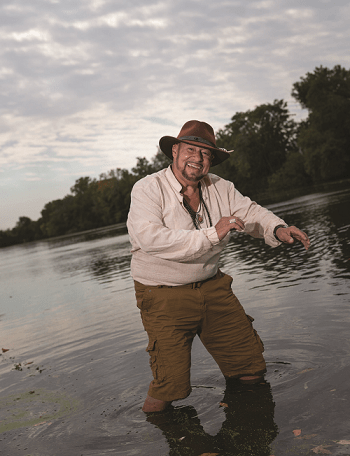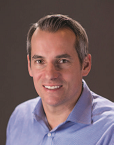“The hospital staff members gave me hope when I thought I might not be able to do the things I love”

Thanks to the Center for Wound Healing, a patient with a serious foot infection is dancing and kayaking again.
In March 2019, Rick Rodriguez, a dance instructor in Dunellen, was performing a few moves in his new dance shoes and slipped on the floor. He broke his knee and needed surgery. By June, he was back on his feet, but he began to experience pain in his right foot.
“Once I started walking again, I developed a callous in the tip of my right toe,” he recalls. “There was a spot I couldn’t see, and it became infected.”
Rick received treatment, but the infection had already spread to the bone. (Rick has diabetes, which can delay healing.) Doctors at another hospital told Rick his toe needed to be amputated. “I went to my car and wept,” he says. “I need that toe to dance salsa.”
Not only does Rick teach several dance styles, including modern and freestyle, but he also runs recreational activities along the Passaic River. Over the past decade, Rick, who has been nicknamed “River Man,” has worked to clean up the river and has created an island, where he entertains inner-city children. He brings people to the island and runs special events, including a kayak parade and an art show. He even created a dance floor on the island.

Anxious to return to his active lifestyle, Rick decided to get a second opinion at the Center for Wound Healing at Robert Wood Johnson University Hospital (RWJUH) Somerset.
“It didn’t seem like his toe needed to be amputated,” says Brandon Zuklie, DPM, a podiatrist and Co-Medical Director of the Center, which has three podiatrists, four infectious disease physicians, a plastic surgeon, and four wound care nurses.
An Optimal Healing Environment
Dr. Zuklie used a different dressing for Rick’s wound and referred him to an infectious disease specialist, who prescribed a new antibiotic (the one Rick had been taking didn’t work).
Dr. Zuklie also prescribed hyperbaric oxygen therapy, which involves delivering a high concentration of pressurized oxygen to injured tissue to give it the “optimal environment to heal,” he says.
The treatment, which lasts about two hours per session, involves lying on a table that slides into a clear plastic tube and breathing the oxygen. Rick received it daily for several weeks.
“The first time I had the treatment, I was nervous,” he recalls. “By the second or third day, I was very comfortable because I knew what to expect. I watched movies the entire time.”
Rick did well.
“Most patients receive the treatment for six weeks, but Rick’s ulcer healed after just three weeks,” says Dr. Zuklie.
The dressing on Rick’s wound was changed at each appointment.
“The staff members were friendly, attentive, and efficient,” recalls Rick. “They stayed on top of my wound, and I suspect that’s one of the reasons it healed so quickly.”
New Hope
Today, Rick is thrilled to be back on his feet. Although he experienced a recurrence last summer after spending time in the river, he was treated at the Center for Wound Healing again and healed quickly. This time, he didn’t need any hyperbaric oxygen treatment or antibiotics. The wound was simply cleaned and dressed. Rick is grateful that he’s able to dance again.
“The hospital staff members gave me hope when I thought I might not be able to do the things I love,” he says. “They’ve given me the chance to go back to being the River Man.”
For more information about the Center for Wound Healing at Robert Wood Johnson University Hospital (RWJUH) Somerset, call (908) 203-6200.